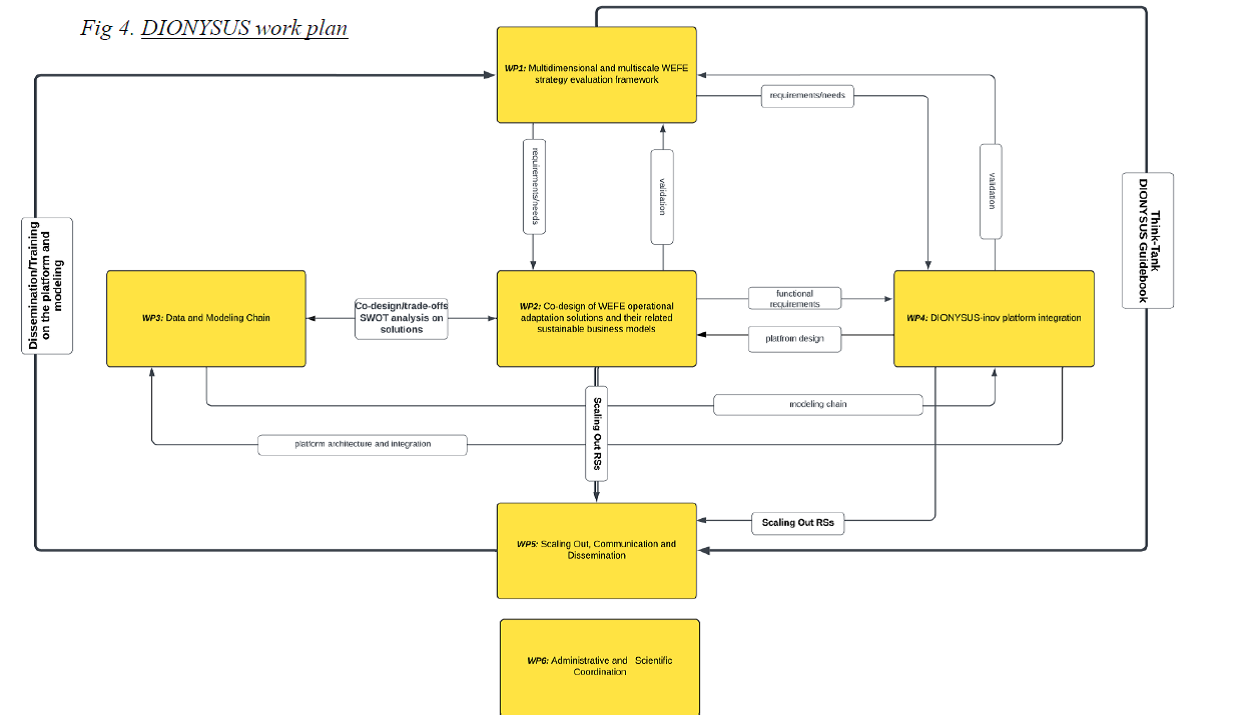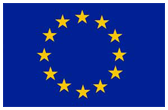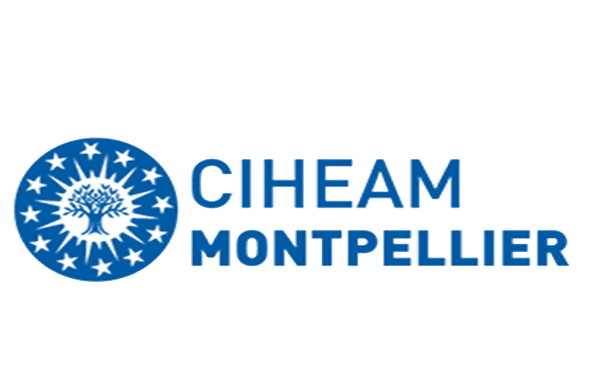The project is broken into five work packages (WP).

Figure 1 flowchart provides an overview of the interaction between these work packages.
The primary goals of this work package are as follows:
- to create a comprehensive evaluation framework that will conduct a multidimensional assessment of the performance of WEFE operational adaptation and market solution combinations in order to evaluate their potential and actual contribution to Nexus.
- to develop, monitor, and implement a roadmap for early engagement of stakeholders within a participative approach and co-design of WEFE operational adaptation solutions and business models.
- to design a common methodological framework for the DIONYSUS project that will compile methodological advancements into a replicable DIONYSUS Guidebook.
WP2 will be constructed around the four cross-sectoral Action-Panels in all DSs to collaboratively develop and implement operational adaptation solutions, their associated sustainable business models, and integrated policy options for WEFE-vulnerable key agricultural productions in Egypt, Greece, Morocco, and Italy. WP2 is designed to identify and operationalize the following through evidence-based and on-DS-site participatory activities:
- The needs for the Action Panels to function (WP1).
- The strengths, weaknesses, opportunities, and threads of modelled value chains (WP3).
- The functional requirements to structure and feed the DSS platform (WP4).
- the selection of the most efficient WEFE solutions in close collaboration with T3.6.
This section is dedicated to the meticulous evaluation, unification, and advancement of the WEFE components within the DIONYSUS initiative. The primary objective is to establish a comprehensive model chain that accurately depicts the complex interactions between ecosystems, energy, water, and sustenance. This, in turn, will result in the development of policy options and functional adaptation strategies. The method entails the refinement of the DAHBSIM model to include water balance dynamics, soil erosion, energy usage, value-chain interactions, and ecosystem services. Furthermore, the macroeconomic implications are investigated through the incorporation of the Computable General Equilibrium (CGE) model. In a multi-criteria decision-making framework, this extended model serves as the foundation for the assessment of a variety of adaptation strategies. The co-creation of sustainable business plans that are in accordance with the European Green Deal and related directives is guided by the outcomes.
The primary objective of this WP is to investigate and establish the DIONYSUS-inov platform. The subsequent objectives are established for this purpose:
- Analysis and definition of user interface functionalities, calibration, and validation of the data management and communication system.
- Study of the end-to-end architecture of the digital infrastructure DIONYSUS-inov platform.
- Design and construction of the DIONYSUS-inov platform, realisation, integration, and validation of the backend and frontend structure
The primary objective of this work package is to:
- expand the number of participants in the DIONYSUS Think-Tank through networking activities in collaboration with WP1
- design, elaborate, and implement the DIONYSUS exploitation, dissemination, and communication strategy to inform and communicate on project actions, activities, and results, as well as to mobilise and engage target audiences.
- scale out the methodologies and findings of DSs to three selected replication sites.



